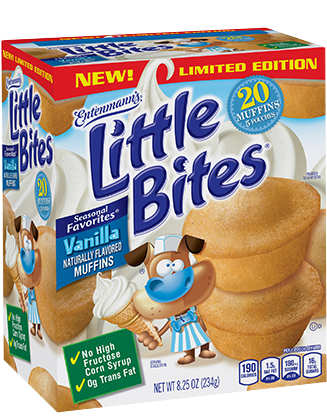
Our homes are often the places we cherish the most. Why? Because they provide us with security, comfort, and mental peace. This is why owning a home is one of the most significant investments, contributing to our financial stability and ensuring a safe environment for our families. However, to maintain this sanctuary and investment, it’s crucial to focus on durability. A durable home not only stands the test of time but also retains its value and provides ongoing protection against various elements.
This article will delve into ten effective ways to enhance the durability of your home, ensuring it remains a strong, valuable asset for years to come.
- Invest in Quality Siding
Quality siding plays a vital role in protecting your home from weather elements and enhancing its overall durability. Siding acts as a shield, preventing rain, snow, and wind from damaging the underlying structure. Additionally, it contributes to improved energy efficiency by providing an extra layer of insulation.
There are several types of siding materials to choose from, including vinyl, fiber cement, wood, and metal. If you’re looking for a low-maintenance and affordable option, Vinyl siding is the way to go. However, if you want excellent durability and a variety of design options, fiber cement is the best choice. Wood siding provides a classic look but requires more upkeep, while metal siding is highly durable and resistant to fire and pests.
Choosing the right material includes considering several factors, and a reliable siding contractor can help you understand the type of siding that is most suitable for your climate and home design. Moreover, a skilled contractor ensures proper installation, which is essential for maximizing the siding’s benefits. Poor installation can lead to gaps and vulnerabilities, compromising the home’s protection.
- Upgrade Your Roofing
A durable roof is essential for protecting your home from weather damage and leaks. Hence. upgrading your roofing materials can enhance your home’s durability.
Various roofing materials offer different benefits. Asphalt shingles are affordable and easy to install, while metal roofing is highly durable and fire-resistant. Tile and slate roofing are long-lasting and offer a unique aesthetic appeal.
Regular maintenance is also critical for prolonging the roof’s lifespan. This includes inspecting for damaged shingles, cleaning gutters, and ensuring proper ventilation. Addressing minor issues promptly can prevent major problems and costly repairs in the future.
- Install High-Quality Windows
High-quality windows are crucial for improving insulation, energy efficiency, and security in your home. Durable windows help maintain a comfortable indoor temperature, reducing heating and cooling costs. They also provide a secure barrier against intruders.
When selecting windows, consider materials such as vinyl, wood, fiberglass, and aluminum. Among these, fiberglass windows are strong and energy-efficient, while aluminum windows are durable and lightweight.
Professional installation is essential to ensure proper sealing and longevity. Improperly installed windows can lead to drafts, leaks, and reduced energy efficiency.
- Reinforce the Foundation
The foundation is the backbone of your home, and its integrity is critical for structural stability. A strong foundation prevents issues such as cracks, uneven floors, and sticking doors or windows. Identifying and addressing foundation problems early can save you from extensive repairs and potential safety hazards.
Foundation repair methods vary depending on the severity of the issue. Piering involves installing steel piers to support the foundation, while slab jacking lifts and stabilizes sunken concrete slabs. Waterproofing measures can also protect the foundation from moisture-related damage.
- Opt for Durable Flooring
Durable flooring is essential for withstanding daily wear and tear, enhancing the longevity and aesthetic appeal of your home.
You can go for hardwood flooring, which is timeless and can be refinished multiple times. However, laminate flooring is cost-effective and resistant to scratches. Tile flooring is highly durable and easy to clean, making it ideal for high-traffic areas.
Professional installation ensures a flawless finish and maximizes the flooring’s lifespan. Proper installation prevents issues such as uneven surfaces and gaps, which can compromise the flooring’s durability.
- Ensure Proper Drainage
Proper drainage is crucial for preventing water damage and maintaining the structural integrity of your home. Water accumulation can lead to foundation issues, mold growth, and damage to the exterior and interior of the house. Ensuring that your home has an efficient drainage system can significantly enhance its durability.
Effective drainage solutions include installing gutters and downspouts, ensuring proper grading around the foundation, and using French drains or sump pumps where necessary. Gutters and downspouts direct rainwater away from the house, preventing water from pooling around the foundation.
Regular maintenance of the drainage system is also essential. This includes cleaning gutters to remove leaves and debris, checking downspouts for clogs, and inspecting the grading to ensure it remains effective.
- Use Durable Paints and Finishes
Using high-quality paints and finishes is essential for protecting both the exterior and interior surfaces of your home. Durable paints provide a barrier against moisture, UV rays, and wear, extending the life of your walls and surfaces.
When choosing paint, consider weather-resistant options for exterior surfaces. These paints are formulated to withstand harsh weather conditions and resist fading, cracking, and peeling. For interior surfaces, choose paints that are easy to clean and resistant to stains and scuffs.
By using durable paints and finishes, you can protect your home from damage and enhance its aesthetic appeal.
- Secure Doors and Locks
Durable doors and locks are vital for ensuring the security and energy efficiency of your home. High-quality doors provide a strong barrier against intruders and help maintain indoor temperatures by preventing drafts.
There are several material options for durable doors. Solid wood doors offer a classic look and good insulation properties. Steel doors are extremely strong and resistant to weather and wear. Fiberglass doors combine durability with energy efficiency and are available in various styles.
Installing quality locks and hardware is equally important. High-security locks and deadbolts provide reliable protection against break-ins. Additionally, ensuring that doors and frames are properly aligned and secure can prevent drafts and improve energy efficiency.
Conclusion
Building a durable home is about more than just protecting your investment—it’s about creating a haven where your family can thrive for generations. By focusing on quality materials, skilled craftsmanship, and regular upkeep, you ensure that your home not only stands strong against the elements but also continues to offer comfort and security. So, use this article as your guide and implement these strategies to fortify your home. Your efforts today will pay dividends in the peace of mind and lasting legacy your home provides.



